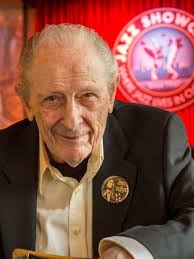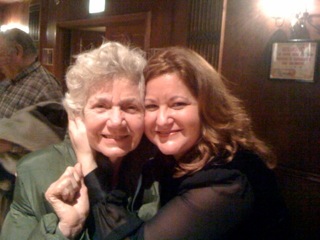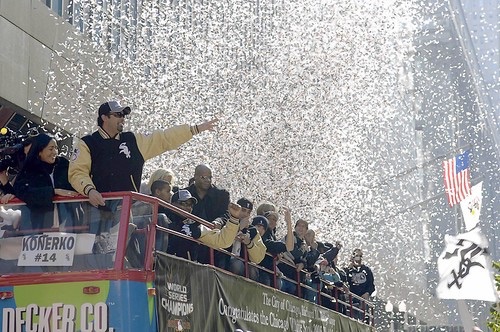Can you sum up your life in three songs?
November 11, 2015 • 9 Comments • Posted in Blogroll, careers/jobs for people who are blind, memoir writing, teaching memoir, writing promptsChicago Public Radio (WBEZ) is asking listeners and on-air guests to sum up their lives in three songs. This past week I asked writers in the four memoir classes I lead here in Chicago to take on this challenge as well.
The WBEZ web site acknowledges that limiting your lifespan to three songs may not be easy, but could be fun. It suggests you pick three songs from different periods in your life, or maybe three tracks that simply sum up who you are. For my memoir classes, I asked writers to give a short explanation of why their three songs sum up who they are. Many writers spelled out the lyrics to the songs, and in class, some even sang them.
Ninety-four-year-old Wanda wrote that God Bless the Child reminds her of growing up during the depression on Chicago’s South Side. She said she could especially relate to the part where Billie Holiday sings, “Rich relations give, Crust of bread and such, You can help yourself, But don’t take too much.” These days Wanda likes listening to Dinah Washington’s What a Difference a Day Makes. “I went to high school with Ruthie Jones,” she laughs. “That was her name before she changed it to Dinah Washington.”
Wanda’s fellow writer Nancy grew up on a farm in Central Illinois, left for Chicago to attend Northwestern University, and stayed here after graduation to teach elementary school. Her love for Broadway musicals influenced her selections.
Nancy chose Oh What a Beautiful Morning from Oklahoma for her years on the farm, and the line “If you become a teacher, by your pupils you’ll be taught,” in the song Getting to Know You (from The King and I) inspired her to choose that to represent her 34 years as a teacher. “The little hint of romance between Anna and the King of Siam also reminded me of those years,” she explained. ”I loved visiting the bars and restaurants in the area and perhaps hoping for a little romance.” Nancy’s entire essay is posted on the Beth’s Class blog — You’ll have to go there to see what she chose for her third song.
Only a handful of tunes were chosen by more than one writer. Two writers summed up their retirement years with the Beatles song Let it Be, two young women (they’re not even 70 years old yet!) chose Helen Reddy’s I am Woman, and two other writers chose Simon & Garfunkel’s Bridge Over Trouble Water for their young adult years.
Two writers chose Patty Page’s Tennessee Waltz, too, but for entirely different reasons. One remembered lying on her older sister’s bed and feeling grown up while listening to Tennessee Waltz on a transistor radio in their shared room. The other remembered The Tennessee Waltz as a song she danced to in college with her first love. “It was our song,” she wrote. “But it didn’t last forever.”
Bob was one of many writers who had Chicago (My Kind of Town) on their lists, but his reasoning for picking that Frank Sinatra tune was a bit different from the others who chose it: the line “Chicago is why I grin like a clown, it’s my kind of town” makes him think of an uncle and aunt he lived with when he was a teenager.
“Uncle Morrie worked as a circus clown at Riverview Park, where he roamed the park and entertained the crowds.” Bob’s aunt Sylvia worked there, too. “She worked at an amusement stand where she wore a bathing suit and sat at the top of a long slick slide, waiting for people to pay their dime and throw 3 balls at a target. Whenever anyone hit the bullseye, it would release Aunt Sylvia, and she’d slide down the sleek slide and hand you a box of candy.” And that’s exactly how Bob’s Uncle Morrie met his Aunt Sylvia. “Uncle Morrie walked up, played his dime, and hit the bullseye with the 1st ball,” Bob wrote. ”Aunt Sylvia slid down the slide, handed him a box of candy, and that was it. It was an immediate attraction for both of them.”
Writer Mary Katherine opted for three songs no one else in class chose:
- I’ve Got the World on a String
“From the distance of many decades, I consider my childhood and early adulthood as secure, generally happy and optimistic. And after adolescence, I seemed to be in love, intermittently, with one man after another.” - Oh, Mary, Don’t You Weep
Mary Katherine eventually married the man of her dreams, and for a while the two of them had the world on a string. “Euphoria didn’t last, of course,” she wrote. “There were some staggering body blows to our world. Some of it had to be concealed, so nobody knew the full extent of our challenges.” - September Song — based on a familiar poetic metaphor that compares a year to a person’s life span from birth to death – describes Mary Katherine’s life now. “For me, the romantic commitment to spend precious days with a loved one is easy to expand into spending our last precious days with all those we care about, for example spending precious days with friends in a memoir class.”




